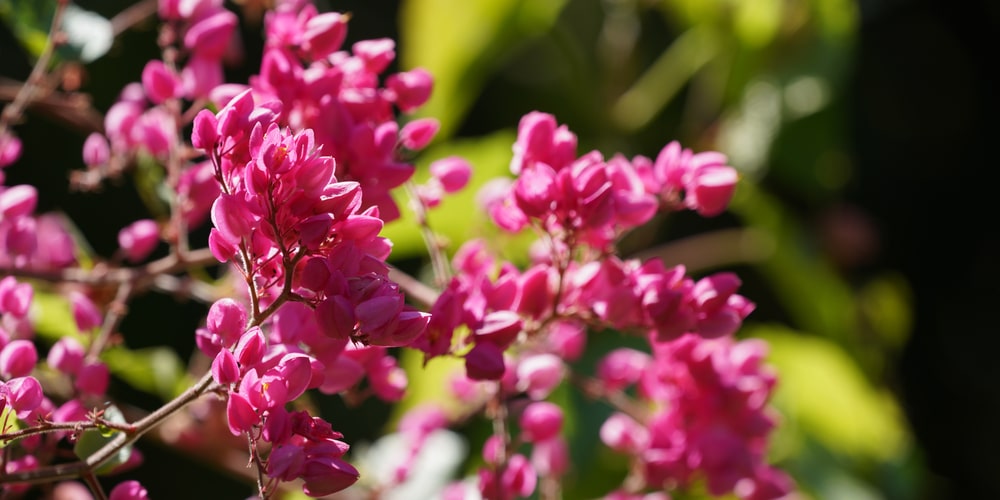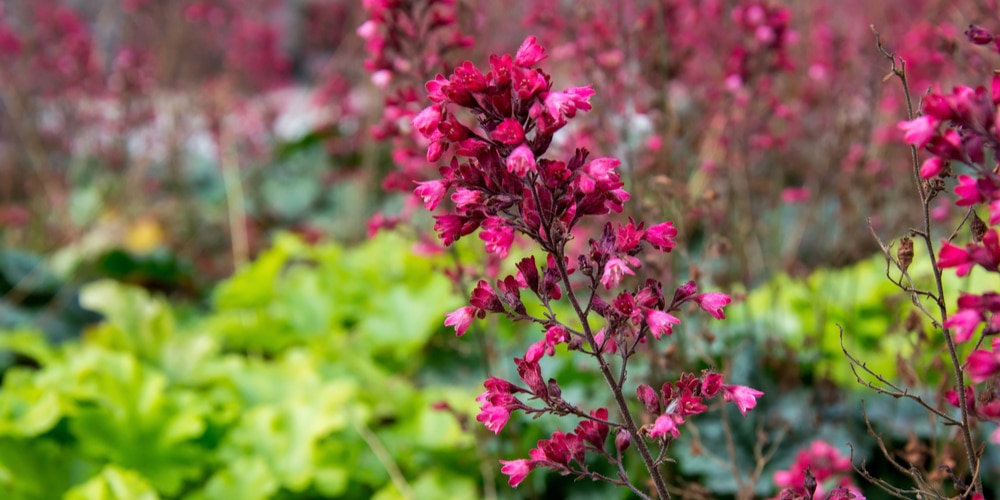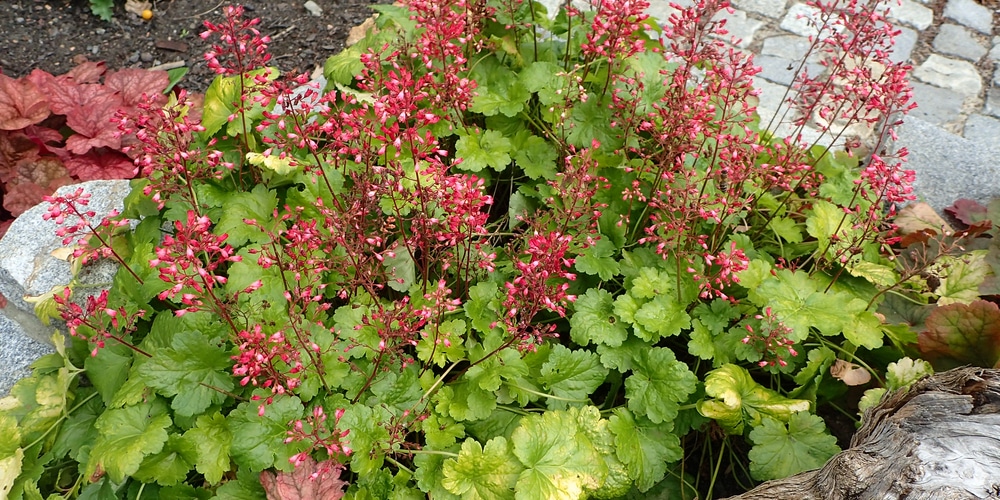Coral bells are characterized by their showy flowers and attractive foliage. You’ll easily spot a coral bell from their bell-shaped blooms that come in shades of pink, red, white, and purple. These flowers grow on top of slender stems surrounded by large leaves.
They are a favorite of many gardeners because of their versatility and easy care. Coral bells can be used in mass plantings, border plants, or accent plants. Also known as heucheras, they are relatively long-lived perennials that bloom yearly with very little care.
Can Coral Bells be Divided?
If you’re looking forward to propagating your coral bells by division, you’ll be happy to know that it’s very easy to do! They can be divided both spring and fall, although fall is generally the best time.
Division is one of the best ways to propagate coral bells because it’s fast and easy, and it doesn’t require any special equipment.
Plus, you can divide your plants every few years to keep them healthy and prevent them from getting too big for their space.
Benefits of Dividing Coral Bells
These semi-evergreen perennials are known for their easy care and long life. They are drought tolerant and will thrive in a variety of soil types. Aside from their ability to withstand neglect, they are also resistant to deer and rabbits.
When you divide your coral bells, you’ll be rewarded with more plants that are just as tough and easy to care for as the original. They will also bloom just as profusely, so you can enjoy their colorful flowers all season long! Here are some of the benefits of dividing coral bells:
More Plants for Your Garden
Dividing your coral bells will give you more plants to use in your landscape. You can use them to fill in bare spots, create new beds, or add to your existing collection. They make excellent groundcover and are perfect for mass plantings.
Bigger Blooms
When coral bells are crowded, they often produce smaller blooms. This is probably because the plants are competing for resources like water, nutrients, and sunlight. Dividing them will give each plant more room to grow, leading to bigger blooms that are sure to impress your neighbors.
Additionally, the flowers will last longer because they won’t be weighed down by the foliage.
Improved Foliage
Coral bells are grown for their colorful leaves as much as their flowers. If your plants have been in the ground for a few years, you may notice that the leaves are starting to look a bit ragged. This is because the center of the plant is often the first to die out.
Dividing your coral bells will give them a chance to produce new growth, resulting in healthier plants with vibrant foliage. The leaves will also be larger because they won’t have to compete for resources. You’ll love the way your garden looks when it’s full of lush, green plants!
Easier to Care For
Once your coral bells are divided, they will be easier to care for. You won’t have to water them as often because each plant will have a smaller root system. Additionally, you can fertilize them less because they will be getting all the nutrients they need from the soil.
Weeding will also be a breeze because you’ll be able to reach the plants more easily. You can simply pull them out by hand or use a small trowel to get rid of any unwanted weeds.
How to Propagate Coral Bells by Division
Even if you’ve never divided plants before, it’s easy to do with coral bells. Just follow these simple steps, and you’ll have new plants in no time!
1) Start by digging up your plant from the ground. Use a spade or shovel to loosen the soil around the edges of the plant. You may need to dig down a few inches to get all the roots. Carefully do so, ensuring that the roots are not damaged in the process.
2) Once you have dug up your plant, shake off any excess dirt and place it in a shady spot. This will prevent the roots from drying out while you work.
If you have a large number of plants, you may want to divide them into smaller groups. This will make the process easier and prevent the roots from getting damaged.
3) Next, you’ll need to divide the root ball into smaller sections. This can be done by simply pulling it apart with your hands or using a sharp knife. Don’t forget to sterilize your tools before moving on to the next plant!
It’s important to make sure that each section has a good amount of roots. If not, the plant may not survive.
4) You can pot up your new plants or transplant them into your garden bed. Be sure to water them well and give them some time to adjust to their new home.
5) Observe your plants over the next few weeks to make sure they are adjusting well. If you see any signs of stress, such as wilting leaves, be sure to give them a little extra attention.
Final Thoughts
Propagating by division is a great way to increase your collection of coral bells. It’s easy to do and only requires a few simple tools. Plus, you’ll end up with more plants that are easier to care for!
Do you have an overgrown clump of coral bells in your garden? Why not give division a try? You may be surprised at how easy it is!
Related Article: Coral Bells and Hostas: Good Companion Plants


